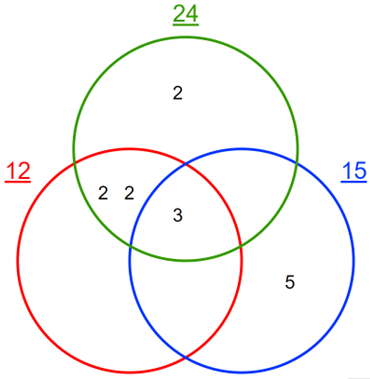Have you ever wondered what the smallest number is that can be evenly divided by two or more numbers? This concept is known as the Least Common Multiple (LCM), and it’s a crucial topic in mathematics, especially for those who love numbers. Understanding how to calculate LCM can be incredibly beneficial, whether you’re solving complex math problems or planning schedules.
 LCM Calculator
LCM Calculator
LCM Calculator for Math Enthusiasts

This image is property of www.calculator.io.
What is LCM?
The Least Common Multiple (LCM) of a set of numbers is the smallest positive integer that is divisible by each number in the given set. For instance, the LCM of 2 and 3 is 6 because 6 is the smallest number that 2 and 3 can both divide without leaving a remainder.
Why Use an LCM Calculator?
Whether you’re a student, a teacher, or a math enthusiast, calculating the LCM can sometimes be cumbersome, especially with larger numbers or multiple sets. An LCM calculator can speed up this process by providing quick and accurate results.
Using the LCM calculator you can find the LCM of two or more numbers effortlessly. This calculator offers solutions via different methods, making it a versatile tool for learning and teaching.
Directions for Use
To use the LCM calculator:
- Input the numbers separated by spaces or commas. Ensure not to use commas within a number (e.g., write one thousand as 1000, not 1,000).
- Press “Calculate.”
The calculator will then display the LCM of the input numbers immediately. If you’re interested in the detailed solution, select the preferred method from the drop-down menu and press “Calculate” once more.
Calculation Algorithms
Listing Multiples
One straightforward way to find the LCM is by listing the multiples of each number until you find the smallest common one.
Example: Find LCM of 5 and 7
- Multiples of 5: 5, 10, 15, 20, 25, 30, 35, 40, 45, 50, 55, 60, …
- Multiples of 7: 7, 14, 21, 28, 35, 42, 49, …
The first common multiple is 35, so LCM(5, 7) = 35.
Prime Factorization
To use prime factorization:
- List all prime factors of each number.
- Write down the prime factorization using exponents.
- Multiply the highest powers of all prime factors.
Example: Find LCM of 3, 12, 40
- Prime factors:
- 3: 3 (prime)
- 12: 2 × 2 × 3
- 40: 2 × 2 × 2 × 5
- In exponent form:
- 3 = 3¹
- 12 = 2² × 3
- 40 = 2³ × 5¹
- LCM = 2³ × 3¹ × 5¹ = 120
Alternatively, you can skip the exponent form and proceed directly by multiplying each prime factor the maximum times it occurs in any number: 2 × 2 × 2 × 3 × 5 = 120.
Cake/Ladder Method
This method involves writing the numbers side by side and performing successive divisions by prime numbers until no two numbers are divisible by the same prime.
Example: Find LCM of 12, 15, 24
| 12 | 15 | 24 | |
|---|---|---|---|
| 2 | 6 | 15 | 12 |
| 2 | 3 | 15 | 6 |
| 3 | 1 | 5 | 2 |
| 5 | 1 | 1 | 1 |
Multiply the numbers on the left and at the bottom: 2 × 2 × 3 × 5 = 120. Therefore, LCM(12, 15, 24) = 120.
Division Method
In the division method, divide the set of numbers by primes repeatedly until the remainder contains only ones.
Example: Using LCM of 12, 15, 24
| 12 | 15 | 24 | |
|---|---|---|---|
| 2 | 6 | 15 | 12 |
| 2 | 3 | 15 | 6 |
| 3 | 1 | 15 | 2 |
| 5 | 1 | 1 | 1 |
Here, LCM(12, 15, 24) = 2 × 2 × 3 × 5 = 120.
GCF Method
You can also compute LCM using the Greatest Common Factor (GCF).
Formula: [ \text(x, y) = \frac{\text(x, y)} ]
To find the LCM of more than two numbers: [ \text(x, y, z) = \text(\text(x, y), z) ]
Example: LCM of 6 and 8
- GCF(6, 8) = 2
- LCM(6, 8) = (6 × 8) / 2 = 48 / 2 = 24
Venn Diagram
The Venn diagram method helps visualize prime factors of numbers. Place common factors in the intersection of circles representing each number. Multiply all the factors in the union of circles to get the LCM.
Example: LCM(12, 15, 24)
Prime factors:
- 12: 2² × 3
- 15: 3 × 5
- 24: 2³ × 3
The Venn Diagram for two numbers typically looks like overlapping circles.
In the center of the overlapping areas, place the common prime factors. For the unique areas, place the rest of the factors for each number. Multiply all the factors together to find the LCM.
Example Calculation
Imagine Mike and Lina both attend karate lessons. Mike attends every 5 days, while Lina attends every 3 days. If they attended the lesson together today, how many days will pass until they attend another class together?
To solve this, you need to find the LCM of 5 and 3.
- Prime factors of 3: 3 (prime)
- Prime factors of 5: 5 (prime)
Since these are primes, LCM(5, 3) = 3 × 5 = 15.
Therefore, Mike and Lina will attend a karate lesson together again in 15 days.
Related Calculators
When working on mathematical calculations, you might also find these calculators valuable:
- Fraction Calculator
- GCF Calculator
- Arithmetic and Geometric Sequence Calculator
- Prime Factorization Calculator
These tools complement the LCM calculator and assist in broader mathematical problem-solving.
In summary, understanding and computing the LCM using different methods is fundamental for various applications. Whether you’re using the listing multiples method, prime factorization, cake/ladder method, division method, GCF method, or Venn diagrams, having a reliable LCM calculator can make these computations quick and straightforward. So next time you face an LCM problem, remember the methods and tools available to you.
